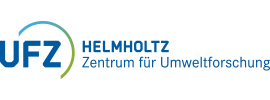Details zur Publikation |
| Kategorie | Textpublikation |
| Referenztyp | Tagungsbeiträge |
| DOI | 10.5194/egusphere-egu25-15544 |
Lizenz  |
|
| Titel (primär) | Software products from the OpenWorkFlow project |
| Titel (sekundär) | EGU General Assembly 2025, Vienna, Austria, 27 Apr–2 May 2025 |
| Autor | Lehmann, C.; Bilke, L.
|
| Quelle | EGUsphere |
| Erscheinungsjahr | 2025 |
| Department | ENVINF |
| Seite von | EGU25-15544 |
| Sprache | englisch |
| Topic | T5 Future Landscapes T8 Georesources |
| Abstract | The siting process of a deep geological nuclear repository is a
complex long-term endeavour involving many different stakeholders.
Assessing the The OpenWorkFlow project, funded by the Bundesgesellschaft für Endlagerung (BGE), aims at developing open source, automated, robust, quality assured simulation workflows in the context of the nuclear waste repository siting process in Germany. During the first project phase from 2021 to 2024 several software products emerged from the OpenWorkFlow project, which will be presented on this poster:
The second phase of the OpenWorkFlow project has started in January 2025. Until the end of 2029 the existing simulation workflows will be heavily extended to support the safety assessment of nuclear waste repository candidates. |
| dauerhafte UFZ-Verlinkung | https://www.ufz.de/index.php?en=20939&ufzPublicationIdentifier=31349 |
| Lehmann, C., Bilke, L., Graebling, N., Heinze, J., Meisel, T., Naumov, D., Sen, Ö.O., Kolditz, O. (2025): Software products from the OpenWorkFlow project EGU General Assembly 2025, Vienna, Austria, 27 Apr–2 May 2025 EGUsphere Copernicus Publications, EGU25-15544 10.5194/egusphere-egu25-15544 |
|
